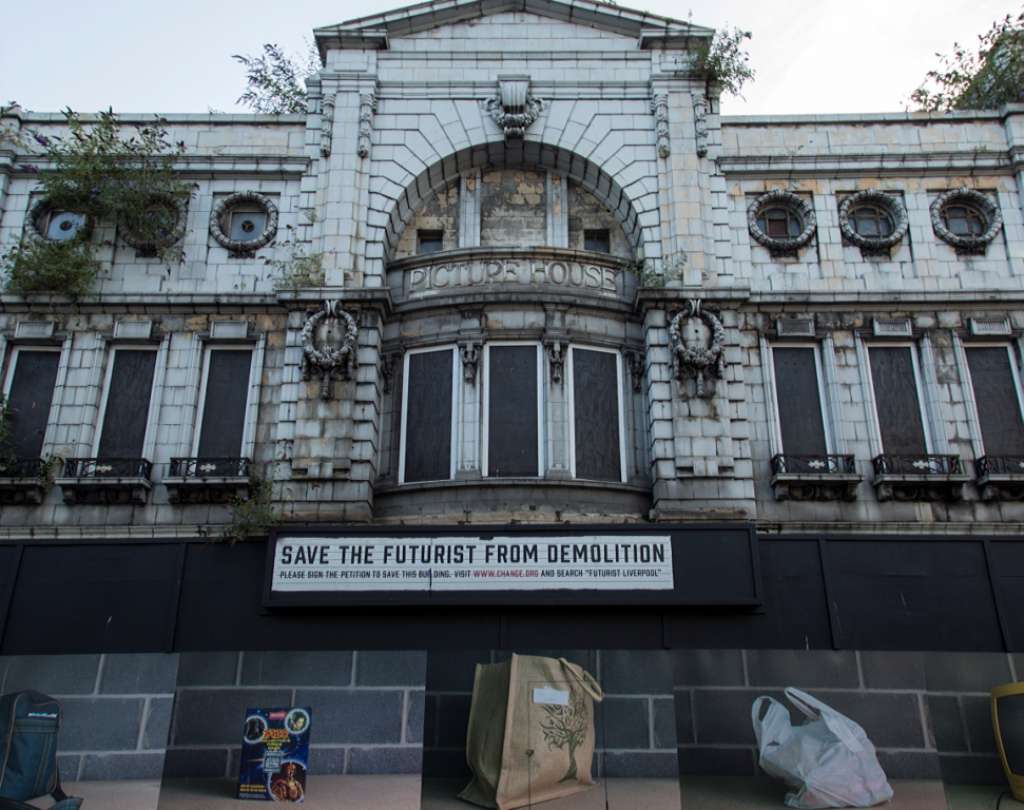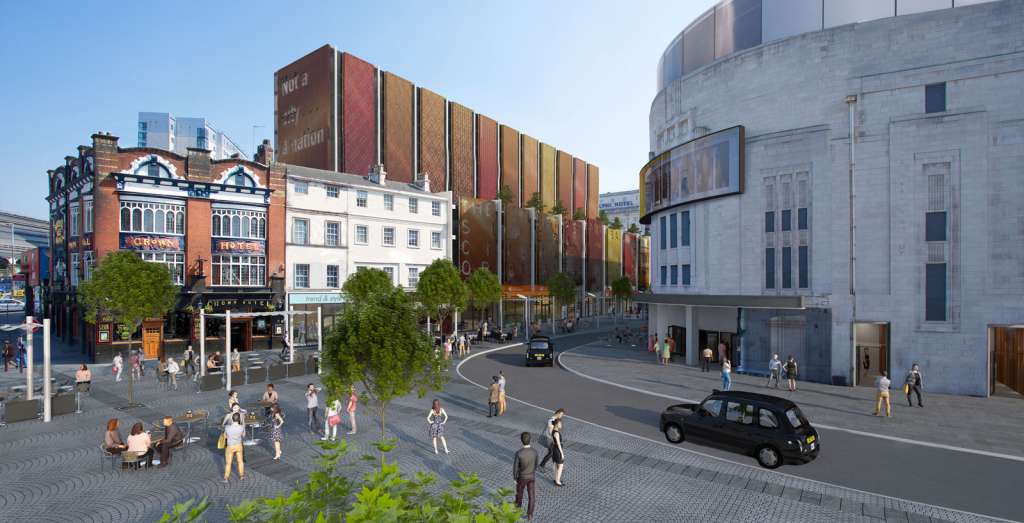SAVE applies to the Court Of Appeal to save Liverpool Lime Street and the Futurist Cinema, all of which are in the World Heritage Site Buffer Zone
5 February 2016
SAVE applies to the Court Of Appeal to save Liverpool Lime Street and the Futurist Cinema, all of which are in the World Heritage Site Buffer Zone. SAVE considers it too important a site to be demolished for student housing and a shopping mall.
Today SAVE will file an appeal with the Court of Appeal over Liverpool City Council (‘LCC’) and Neptune Developments’ proposals to demolish more than ten buildings on Liverpool Lime Street, which is located in the World Heritage Site Buffer Zone. We consider that insufficient consultation took place before the Council determined the future of Liverpool’s gateway street from which the famous railway station takes its name.
SAVE is applying for Permission to Appeal on three grounds, that can be broken down into several points. These include:
- There is no evidence that LCC’s officers considered whether the development may affect the Outstanding Universal Value (‘OUV’) of the World Heritage Site (‘WHS’) nor whether they needed to notify the Department for Culture Media and Sport (‘DCMS’) of the proposals.
- LCC did not consult with DCMS before the decision was taken, but informed them only afterwards, even though the guidance makes clear that it would be very helpful for DCMS to be consulted at an early stage for the purpose of enabling the World Heritage Committee (‘WHC’) to be consulted.
- The concerns of the WHC about development in Liverpool are known, their views on this application are not. It cannot be assumed that the WHC would not be concerned about the Lime Street scheme.
SAVE also considers that the issue of how LCC consults with the UK’s World Heritage Committee and DCMS is crucial in order to protect Liverpool’s World Heritage Site in the future. This also has wider importance for other World Heritage Sites in England and Wales. The current system of consultation is not clear and is not achieving the necessary level of protection.
SAVE challenged LCC’s decision to grant planning permission in the High Court on the grounds that they had failed to notify DCMS (who would then decide whether to notify the WHC) about the application, before permission was granted, even though the development may have impacted upon the OUV of the WHS.
In turn, DCMS did inform the WHC about the plans but only after they had been approved. This meant proper consultation could not take place.
Mrs Justice Patterson who presided over the hearing in Manchester’s High Court in December dismissed SAVE’s challenge. SAVE does not agree with her decision and considers that there are strong grounds for an Appeal.
SAVE is fundraising to help cover its legal costs and is heartened by the response to our fundraising appeal over the last three weeks, to which over 60 people have contributed over £3,000, including contributions from the Merseyside Civic Society, the Cinema and Theatres Association, Professor John Belchem, the Pro Vice-Chancellor of Liverpool University, Paula Ridley CBE, former chairman of Civic Voice and former chair of the V&A Museum, and British screenwriter Frank Cottrell-Boyce, writer of the 2012 Olympics opening ceremony.
We will continue to fundraise: the Fundraising Appeal has allowed support for the retention and repair of Lime Street to be galvanised. Donations can be made here: https://campaign.justgiving.com/charity/savebritainsheritage/limestreet
SAVE Director Clem Cecil says: “We are heartened by the response to our Fundraising Appeal. It is important to remember that despite Lime Street’s present dilapidated appearance, repairing the street could lead to a significant uplift, improving the economy of the area and creating a place where people want to spend time.
“Liverpool's WHS is at risk due to inappropriate development, of which this is a continuation. This is something that DCMS and Secretary of State John Whittingdale should be taking seriously."
SAVE is being represented by Susan Ring and Harry Campbell of Richard Buxton Environmental and Public Law and QC Richard Harwood of 39 Essex Chambers.
For more information please contact SAVE on 0207 253 3500 or office@savebritainsheritage.org
Background
Liverpool’s WHS has been on the WHS At Risk list since 2012, having been inscribed in 2004. The only other European site currently on the At Risk list is Kosovo’s medieval monuments, following the war in 1998. Liverpool’s status as a WHS is to be reconsidered by UNESCO in 2017.
In their letter of response to the planning application last year, Historic England did not comment at all on the impact of the proposed development on the Outstanding Universal Value of the WHS (this is the standard by which value of significance is judged). From SAVE’s point of view this is an oversight: the present system of consultation is unsatisfactory and leaves the nation’s most significant heritage vulnerable.
Lime Street is in Liverpool’s World Heritage Site Buffer Zone. The proposed building exceeds the height recommendations for the area by four storeys, and will have a major and detrimental effect on the setting and Outstanding Universal Value of the World Heritage Site; all points raised in the original objections of SAVE, the Victorian Society, the Merseyside Civic Society, The Cinema Theatre Association and many others.
Lime Street is one of Liverpool’s most famous streets – enshrined in the folk-song Maggie May, once a West End hit for Hollywood’s Judy Garland, and also because it shares a the name with Liverpool’s only surviving mainline Rail Terminus, and Alun Owen’s play ‘No Trams to Lime Street’.
Lime Street is the thoroughfare from the station that leads up to Liverpool’s Cathedrals. It also leads into the Georgian area of the city, framing views of the Anglican cathedral tower (Grade I) and St. Luke’s Church (Grade II*) to the south, and St. George’s Hall (Grade I) and plateau, the Cenotaph (Grade I) Lime Street Station (Grade II) and the Walker Art Gallery (Grade II*), Picton Library (Grade II*) and County Sessions House (Grade II*) to the north.
The Futurist Cinema is a much loved Liverpool landmark: it is the city’s first purpose built cinema and one of a diminishing number of pre-WWI movie theatres in the UK. It was constructed in 1912 by renowned theatre architects Chadwick and Watson. It has a highly decorative façade of faience tiles.
Despite being mostly in city council freehold, and despite the fact that the council has a repairing lease on the Futurist, this historic gateway street has been left under-repaired and decaying for over two decades. It has been claimed that it is beyond repair, but an engineering report carried out last February by independent civil and structural engineers Sutcliffe’s stated that the ‘external façade was found to be in reasonable condition'.
SAVE recognises the need to improve the area, but strongly condemns these plans to demolish rather than repair, and the deliberate neglect over many years of publicly owned heritage assets that should have been maintained under full repairing leases.
Notes to Editors:
SAVE Britain’s Heritage has been campaigning for historic buildings since its formation in 1975 by a group of architectural historians, writers, journalists and planners. It is a strong, independent voice in conservation, free to respond rapidly to emergencies and to speak out loud for the historic built environment.


